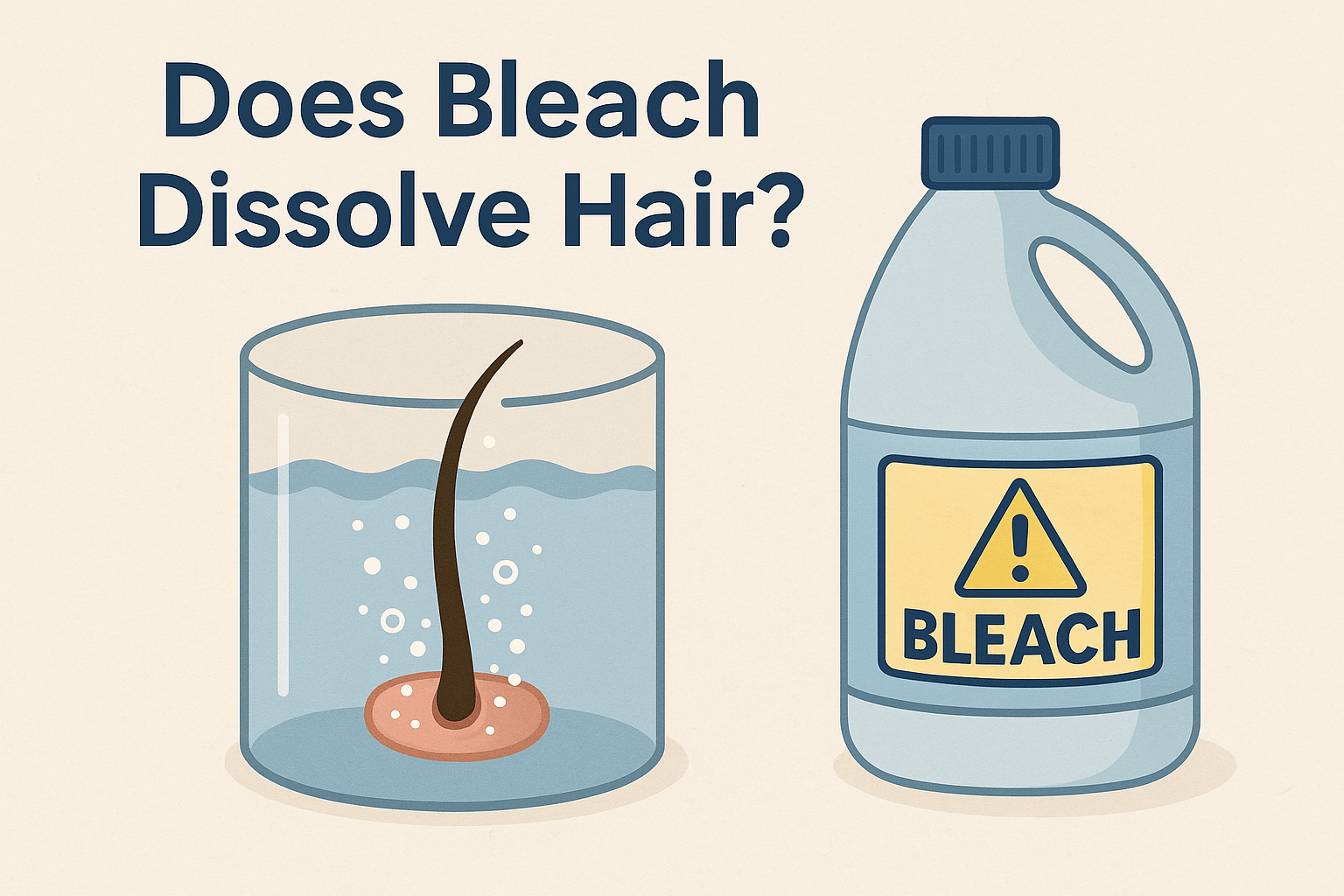
What is Bleach?
Bleach isn’t just for laundry. It’s a powerful chemical. People use it to kill germs, clean mold, and disinfect kitchens. It’s also super strong, which is why you need gloves and goggles when using it.
So… Does Bleach Dissolve Hair?
Short answer? Yes, it can. But not instantly.
Hair is made of keratin. It’s tough. Bleach can break it down over time. Especially chlorine bleach. But it won’t make it vanish like magic. You’ll need patience — and probably more than one round.
How Bleach Breaks Down Hair
Bleach works through oxidation. It changes the chemical structure of stuff it touches. That’s why it turns dark stains white. When it hits hair, it attacks the protein bonds. Slowly, the hair weakens, softens, and eventually breaks apart.
Is It Safe for Drains?
Bleach can help clear hair clogs. But there’s a catch.
- It can eat away at metal pipes.
- It releases toxic fumes when mixed with other cleaners.
- It doesn’t work fast, especially if the clog is deep.
For PVC or plastic drains, bleach is usually okay in small amounts. But don’t overdo it. And NEVER mix it with vinegar or ammonia — that combo can release dangerous gas.
Better Alternatives to Clear Hair Clogs
Bleach isn’t the only way to tackle hair.
- Baking soda and vinegar: Fizzes up, breaks down gunk.
- Boiling water: Helps melt grease holding the hair.
- Drain snakes: Get in there and pull out.
- Enzyme cleaners: Safe, natural, and eat through hair over time.
Chlorine Bleach: Handle with Care
This isn’t a joke. Chlorine bleach is serious stuff.
- Wear gloves.
- Ventilate the area.
- Use it sparingly.
It can cause burns. It stings your eyes. If you breathe in too much, you’ll cough and feel dizzy. Not fun. Always read the label before you pour.
Why Bleach Changes Colors
Have you noticed that bleach turns things weird colors?
Here’s why: it oxidizes the molecules in pigments. Grass stains? Gone. Tomato juice? Faded. Even hair will start to lighten, then break down. That’s the bleach doing its job.
Can Bleach Kill Germs in Drains?
Absolutely. It’s one of the best cleaners for germs. Bleach messes with the protein in bacteria, unraveling it like a sweater. Without proteins, the germs die off fast.
Great for toilets, trash cans, and sink drains — as long as you don’t overdo it.
Why You Shouldn’t Mix Bleach with Anything Else
Mix bleach with vinegar? You get chlorine gas. It’s dangerous. It burns your lungs, eyes, and skin. People have ended up in the hospital because of this mistake.
If you already poured vinegar or another cleaner down your sink, don’t follow up with bleach. Wait. Rinse with lots of water first.
Can Bleach Unclog My Shower Drain?
If hair is the main problem, bleach might help. But it won’t be fast. And it could hurt your pipes if they’re metal.
Instead, try this:
- Remove the drain cover.
- Use a plastic snake or drain tool.
- Pull out as much hair as you can.
- Then pour boiling water mixed with a little dish soap.
- If needed, follow up with baking soda and vinegar (never bleach).
Bleach vs. Hydrogen Peroxide
Looking for something gentler?
Hydrogen peroxide is a good alternative. It breaks down into water and oxygen. Less harsh. Still powerful.
It can clean and disinfect. And it can help break down organic stuff like hair — slowly, but safely.
Key Takeaways
- Bleach can dissolve hair, but slowly.
- It works through oxidation, breaking down protein in hair.
- It can damage pipes and produce toxic fumes.
- Use gloves and never mix it with other cleaners.
- Try safer options like baking soda, vinegar, or enzyme cleaners first.
Final Thoughts
Bleach is powerful. But it’s not always the best choice for clogged drains. If you’re trying to get rid of hair, there are safer and easier ways to do it.
Use bleach only when nothing else works — and always with caution.



